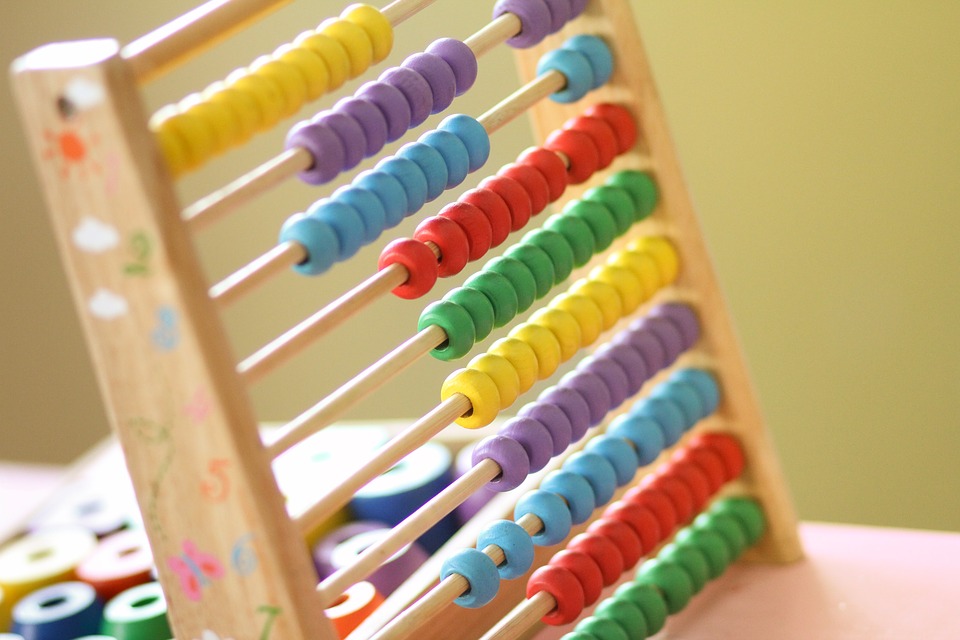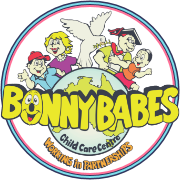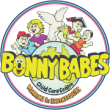
Developing early numeracy skills
Numeracy is the ability to apply maths concepts in all areas of life. Numeracy skills involve understanding numbers, counting, solving number problems, measuring, sorting, noticing patterns, adding and subtracting numbers and so on.
We all need numeracy and maths skills to do everyday things like:
- solve problems – for example, which brand and size of tinned beans is the cheapest?
- analyse and make sense of information – for example, how many wins does my team need to get to the top of the competition?
- understand patterns – for example, what number would the next house in this street be?
- make choices – for example, which bike is the best value?
- Your child’s everyday experiences are full of learning opportunities that lay the foundations for numeracy.
How your child starts learning numeracy
Children start learning numeracy skills from the time they’re born. This learning happens from watching and experiencing numeracy in action, especially in everyday play and activities. For example, it happens when you encourage your child to:
- count fingers, toes and toys
- recognise numbers and shapes on objects like clocks and phones or in books
- decide how many slices of apple she wants.
As your child gets older, he learns more numeracy and maths skills, including size and measurement. For example, this happens as he starts to:
- compare things of different sizes – ‘big’, ‘small’ and ‘medium’
- group things together and talk about same and different
- use words to describe where things are – ‘over’, ‘under’ and ‘next to’
- help set the table
- fill a water bottle
- help with the shopping and use money to buy things
- divide food into equal shares.
And when you talk with your child about maths concepts in your everyday activities, it helps her understand how and why maths is useful. For example, this happens when you point out:
- big and small (size)
- high and low (height)
- heavy and light (weight)
- fast and slow (speed)
- close and far (distance)
- first, second and last (order)
Babies: tips for building numeracy skills
Your baby loves hearing your voice and enjoys stories and songs with repetition, rhyme and numbers. Some things you might already be doing or could start doing with your baby to build numeracy skills include:
- reading stories with numbers – for example, ‘Goldilocks and the three bears’
- playing counting games
- singing number songs and rhymes
- changing your tone of voice to describe concepts – for example, a big voice to describe something big, or a little voice to describe something little.
You can also talk about:
- everyday activities – for example, ‘Let’s put half of the bird seed here and half over there’ or ‘Let’s find matching socks’
- the environment – for example, ‘Look at the little bird over there’ or ‘That’s a tall tree’
- food – for example, ‘Let’s have two pieces of banana’ or ‘How many cups do we need?’
- time – for example, ‘7 pm, time for bed’
- shapes and patterns – for example, ‘Let’s look for all the triangles’.
Toddlers: tips for building numeracy skills
Playing with your toddler helps your child develop communication, imagination and other skills that help him understand maths concepts. Here are some ideas to help you and your child enjoy play together – and learn early maths skills along the way!
Ideas for talking
- Use maths concepts to describe what you and your child are seeing and doing together. For example, ‘Look at the fast cars’ or ‘This bag is heavy’.
- When you’re preparing food, talk about what you’re doing. For example, ‘I’m cutting this orange in half’ or ‘Let’s share these sultanas – one for me and one for you’.
- Point out and name the numbers in your phone number and address.
- When you’re out and about, talk about what’s near or further away. For example, ‘Let’s sit on that bench nearby to have our snack’ or ‘It’s quite far to the lake. Would you like to ride in the stroller?’
- Talk about activities that happen at certain times of the day. For example, ‘We eat breakfast at 7 am’, or ‘Let’s go to the park before we have dinner at 6 pm’.
Ideas for everyday activities
- Go for a nature walk and let your child gather a mix of leaves, sticks, pebbles and other natural items. Your child can sort them into groups based on size, colour, shape or what they do.
- Sing songs and read books that have numbers in them that repeat, rhyme and have rhythm. This will help your child understand patterns.
- Play simple board games, card games and puzzles with shapes and numbers, like ‘snap’, or matching pairs or dominoes.
- Play outside games like ‘I spy’, hopscotch, skittles and ‘What’s the time Mr Wolf’.
- Play or sing music at different speeds. Your child can dance, jump or shake musical instruments to slow or fast songs. Sing nursery rhymes slowly and then speed up.
- Race toy cars and talk about which came first, second or third.
- Help your child to arrange her favourite toys in order from shortest to tallest.
Ideas for play
- Make counting part of your everyday life. For example, count shells at the beach, fruit at the shop and trees on the street, or count toys with your child as he packs them away.
- When you’re out and about, encourage your child to describe or compare shapes of leaves, colours of flowers or sizes of birds.
- Go for a walk down your street and point out how each house or block has a number in a series. Count the steps between one house and the next.
- Use a growth chart or marks on a wall to measure your child’s growing height, and describe to your child what you’re doing.
- Involve your child in cooking. Your child can help stir, pour, fill and mix. This helps your child become familiar with concepts like counting, measuring, adding and estimating.
Here are some books that feature numbers and counting:
- The very hungry caterpillar by Eric Carle
- We all sleep by Ezekiel Kwaymullina
- At the beach I see by Kamsani Bin Salleh
- One fish, two fish, red fish, blue fish by Dr Seuss
- Ten little ladybugs by Melanie Gerth
- Counting kisses by Karen Katz
- Ten little fingers and ten little toes by Mem Fox
- One woolly wombat by Kerry Argent
- Ten little dinosaurs by Mike Brownlow.

Children learn best when they’re interested in something. If your child is doing something he’s particularly interested in – whether it involves dinosaurs, dolls, cars, building, insects or whatever – you can use and explore maths concepts with him while he plays.
Article sourced from Raising Children – The Australian Parenting Website
Looking for high-quality child care for your little one? If you live around Coomera, Hope Island or Oxenford, you’ve found the right place.


